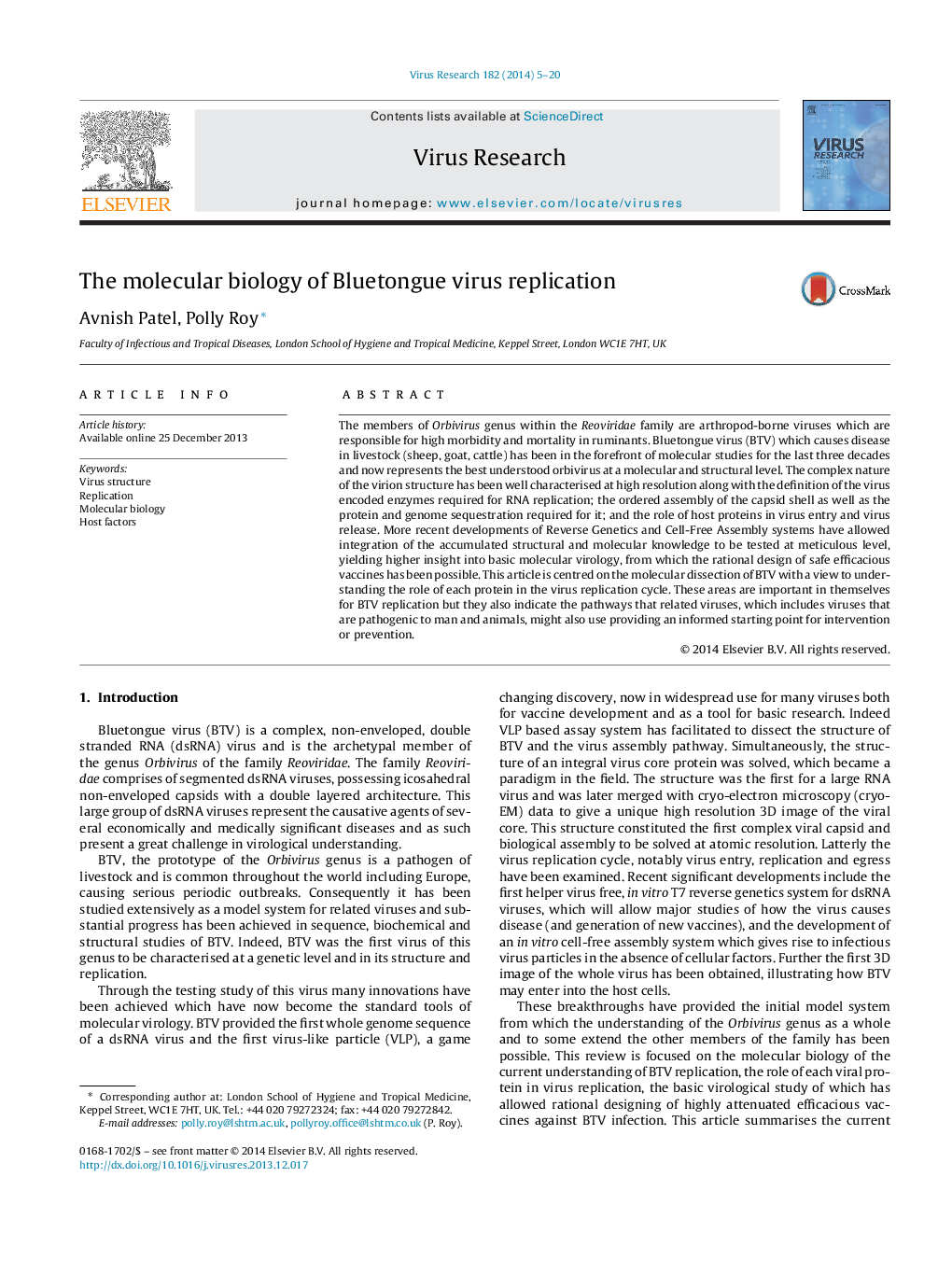| Article ID | Journal | Published Year | Pages | File Type |
|---|---|---|---|---|
| 6142551 | Virus Research | 2014 | 16 Pages |
â¢Structural biology of the Bluetongue virus (BTV).â¢Molecular detail of BTV entry, uncoating, transcription, translation, assembly and egress.â¢Host factors in BTV replication.â¢Reverse genetics of BTV.â¢Cell-free in vitro assembly of BTV.
The members of Orbivirus genus within the Reoviridae family are arthropod-borne viruses which are responsible for high morbidity and mortality in ruminants. Bluetongue virus (BTV) which causes disease in livestock (sheep, goat, cattle) has been in the forefront of molecular studies for the last three decades and now represents the best understood orbivirus at a molecular and structural level. The complex nature of the virion structure has been well characterised at high resolution along with the definition of the virus encoded enzymes required for RNA replication; the ordered assembly of the capsid shell as well as the protein and genome sequestration required for it; and the role of host proteins in virus entry and virus release. More recent developments of Reverse Genetics and Cell-Free Assembly systems have allowed integration of the accumulated structural and molecular knowledge to be tested at meticulous level, yielding higher insight into basic molecular virology, from which the rational design of safe efficacious vaccines has been possible. This article is centred on the molecular dissection of BTV with a view to understanding the role of each protein in the virus replication cycle. These areas are important in themselves for BTV replication but they also indicate the pathways that related viruses, which includes viruses that are pathogenic to man and animals, might also use providing an informed starting point for intervention or prevention.
